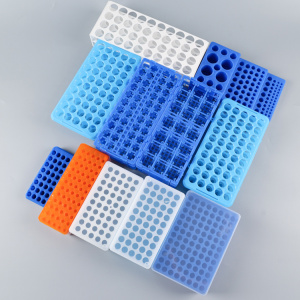Detailed explanation of reagent volatilization in PCR experiments
Detailed explanation of reagent volatilization in PCR experiments.
In the PCR experiment, after adding the reaction system, we carefully cover the lid and repeatedly confirm that the lid is closed to avoid reagent volatilization. But sometimes we also have doubts: we have confirmed that the lid is tightly closed, but after the experiment is completed, the reagent will still evaporate. what is the reason?
In fact, reagent volatilization is one of the most common problems in PCR experiments, and there are many factors that affect reagent volatilization.
Evaporation refers to that during the PCR experiment, the reaction solution evaporates at high temperature, and then condenses on the bottle wall or top cover to form water mist or water droplets, or directly overflows from the air gap of the bottle cap or film, resulting in a change in the concentration of the reaction solution. Changes, the amount of reaction solution decreased, and some even evaporated to dryness, resulting in invalid experiments.
1. Hot lid pressure, temperature
In PCR experiments, we usually heat the lid to prevent condensation of reagent vapor. The temperature of the heated lid is usually higher than that of the reaction solution to prevent condensation of vapors.
Thermal cycler heating lids can be roughly divided into the following four types: non-adjustable heating lids, adjustable heating lids, adaptive heating lids, and automatic heating lids. Adjustable heated lid features finger-tight compression. If not tightened tightly, reagents will evaporate. Edge evaporation can be minimized by increasing the pressure on the heated lid. Sometimes overtightening can pinch the tube and twist the knob. Under normal circumstances, the electric smart heating cover can automatically detect consumables of different heights, automatically compress consumables, and the pressure is uniform and constant, thereby reducing reagent evaporation and manual errors, and improving experimental accuracy and repeatability.
2. Deformation of consumables
For steam leaks, most people think that the hot lid pressure is not enough. The pressure of the hot lid is very important, but that's only one aspect. In fact, consumables are also very important.
PCR orifice plates are usually made of plastic materials, which expand and deform greatly after being heated. The thermal expansion rate of the PCR metal base used to place the PCR orifice plate is extremely low, and the PCR orifice plate cannot expand normally along the plane after thermal expansion. The bulging state makes the top heat cover unable to fully contact the surface of the PCR orifice plate, resulting in uneven temperature and pressure, causing reagent evaporation at the edge of the PCR orifice plate, and affecting the PCR detection effect.
3. Consumables are not tightly sealed
The tightness of the thermal lid and the consumables does not mean that the PCR tube cap is tightly closed, and the quality of the PCR well plate is uneven. High-quality consumables, the surface of the nozzle and the cover are smooth, and the seal behind the box cover is good, and it is not easy to leak. Inferior consumables have uneven spouts and radial lines, which can easily cause leakage or even dry out.
Therefore, in PCR experiments, try to choose high-quality and suitable consumables. At the same time, the reaction system can be expanded to minimize the influence of system evaporation on the reaction.




